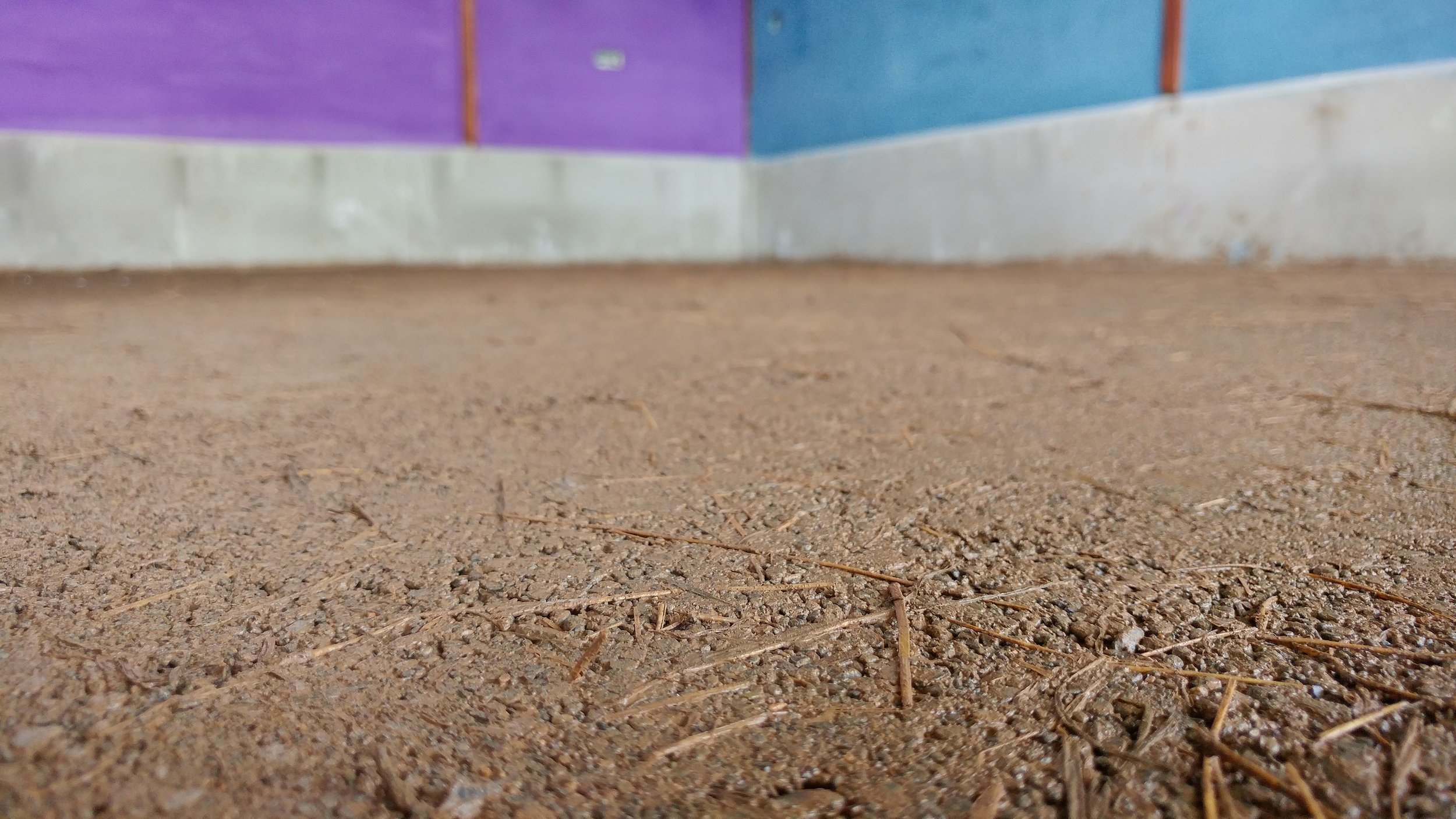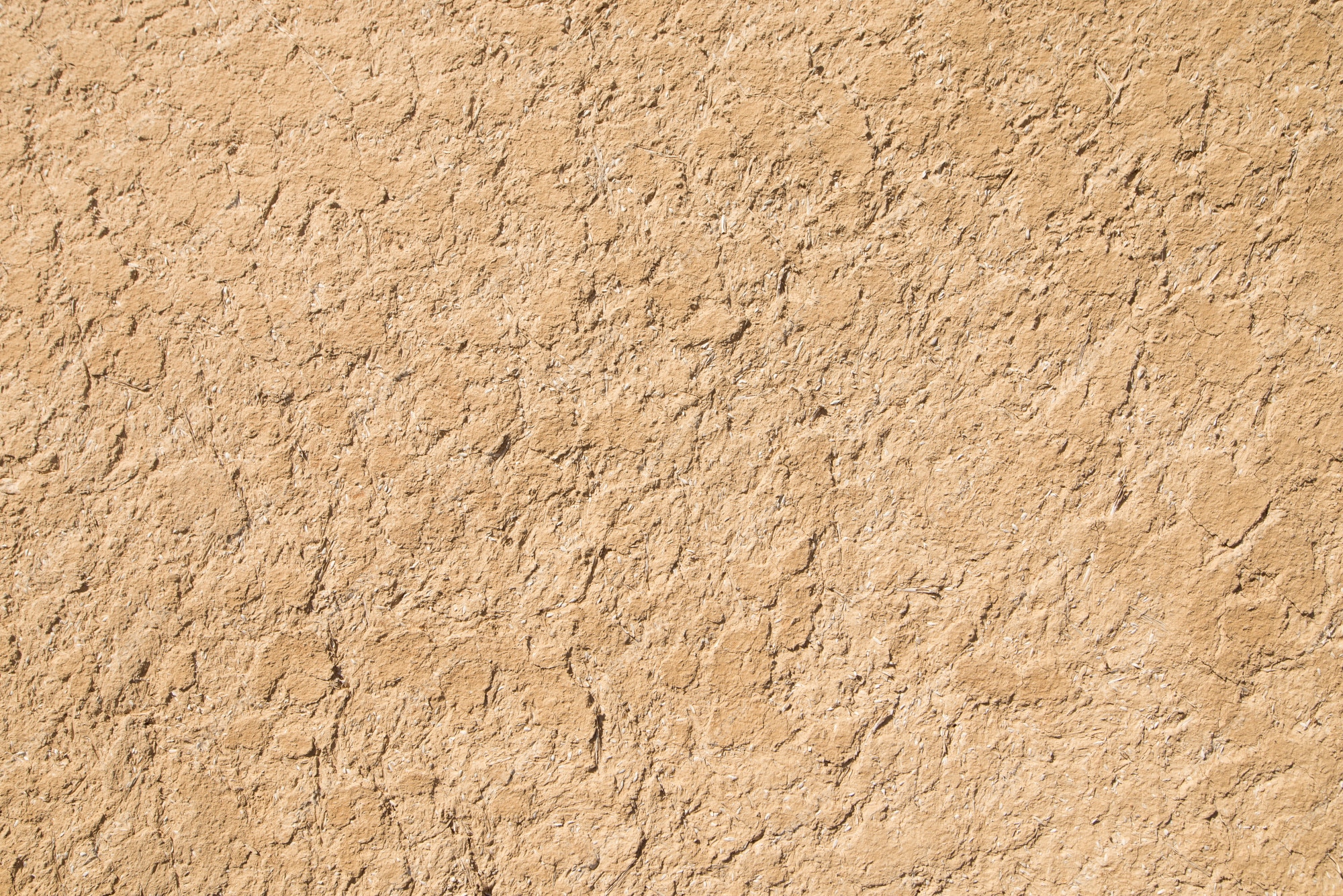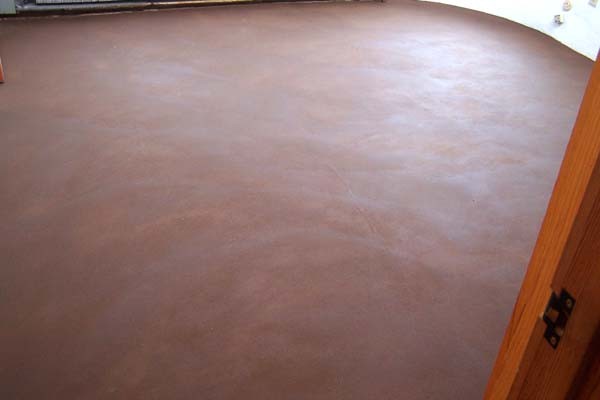The material for flooring can be not only tiles, wood, or PVC but also mud. Have you ever explored the composition and uses of mud flooring? Why is a seemingly outdated material still used in construction today? Let's delve into the advantages, types, and uses of mud flooring by reading this article.

What is a Mud Floor?
Exploring sustainable and innovative flooring options leads us to the unique concept of mud floors—a blend of natural materials like clay, sand, and sometimes straw, meticulously spread across the ground to create durable, eco-friendly flooring. This method, reminiscent of traditional techniques, offers a modern twist with its minimalistic aesthetic and environmental benefits, making it an appealing choice for those looking to combine style with sustainability.

Interesting facts about mud floors:
Research indicates that the use of mud as a primary construction material is prevalent, especially in rural areas. For instance, a study on Sagar Island in West Bengal, India, showed that 75% of the housing on the island used mud as the dominant construction material.
This is indicative of a wider trend in rural India where mud houses are more common due to their affordability and ecological benefits.
Furthermore, mud housing is part of a broader tradition of natural building in India, which has been increasingly acknowledged and revived in recent years. This resurgence is driven by the ecological and sustainable qualities of mud as a building material.
Mud is known for its insulation properties, eco-friendliness, and cost-effectiveness compared to modern materials like cement and steel.
What is the Advantages of Mud Floor?
#1 Eco-friendly
Unlike concrete, mud does not involve a significant amount of carbon emissions during the processing, making it the most environmentally friendly among numerous flooring materials. Due to its natural components, mud flooring is biodegradable.
As mentioned above, mud flooring includes not only mud but also clay, sand, straw, and other materials, all of which are renewable and environmentally friendly. Even if mud flooring is dismantled after installation, it will not cause any environmental pollution.
Tips: There is no waste generated after dismantling mud flooring. Because the mud can be reused, either through secondary processing or as part of compost material in agricultural fields.
Therefore, mud flooring is increasingly favored by environmentally conscious individuals. It not only replaces non-reusable materials but also contributes to reducing carbon emissions.
#2 Fire Resistant
Mud flooring is known for its fire-resistant properties, which can be attributed to the natural composition of the materials used in its construction. This property makes it a safer choice compared to some other flooring materials.
The fire resistance of mud flooring is enhanced by its density and the absence of highly flammable components. When mud is used in construction, it typically forms a dense and compact layer that lacks air pockets, reducing the material's ability to catch fire and spread flames. Additionally, the natural components in mud, such as clay and sand, are inherently fire-resistant.

In a study conducted by the Climate Adaptation Research Center, earth blocks made from soil mixed with water and a small amount of cement were tested in high-temperature environments.
These tests revealed that the material not only resisted fire but also became stronger when exposed to high temperatures. The blocks did not release toxic pollution when exposed to fire, enhancing their safety profile in fire scenarios.
The fire resistance of mud floors is similar to that of other natural building materials like rammed earth, which is known to resist fire for extended periods due to the lack of flammable components. This quality is integral in the construction of buildings in areas prone to wildfires or where fire safety is a major concern.
#3 Moisture Regulation
Due to the inherent characteristics of mud flooring, it can provide excellent humidity regulation. The principle behind its humidity regulation lies in its composition and structure.
The main components of mud flooring are a blend of clay and sand, with clay acting as a binding agent. This combination provides the flooring with cohesiveness and strength. The inclusion of sand improves structural stability and reduces cracking and shrinkage as the mud dries.
Sometimes, organic materials like straw or rice husks are added to enhance the insulating capabilities of the flooring, making it lighter and more resistant to ground movements. In some instances, lime or cement is also incorporated to increase durability and reduce water absorption.

Mud floors are particularly effective in regulating moisture due to their porous nature. This porosity allows the flooring to absorb excess moisture from the air in humid conditions and release moisture when the air is dry, helping to maintain a balanced indoor humidity level.
In terms of application scenarios, mud floors are a practical choice in regions where materials are abundant and easily accessible. They are commonly used in rural areas and in eco-friendly construction projects. Mud flooring is not only environmentally sustainable but also cost-effective, requiring simpler construction techniques and less skilled labor compared to modern flooring materials.
Professional Tips:
However, it's essential to note that while mud floors are beneficial for moisture regulation, they may require regular maintenance to prevent cracks or erosion, especially in areas with high humidity. They are also susceptible to water damage and may require proper sealing with finishes like linseed oil or natural waxes to enhance their longevity and performance.
#4 Easy to Install
The installation process of mud flooring is relatively simple and does not require specialized skills. Because the preparation materials involved are quite straightforward, construction workers only need to mix the materials in advance.
Then, the prepared mud mixture is evenly spread over the foundation. This process does not require advanced equipment or techniques, significantly lowering the threshold for laying the flooring.
In addition, the maintenance of mud flooring is minimal. Daily cleaning can be accomplished with warm water and soapy water. For areas with cracks or damage, adding some extra mud and smoothing it with a trowel is sufficient for repairs.
5 Types of Mud Flooring
Clay Flooring

This type of flooring is known for its durability and aesthetic appeal. The clay used in flooring typically comprises a mix of silica, alumina, and iron oxide, giving it a unique color that transition from reds to yellows.
Pros:
- Wear resistance
- Suitable for areas with heavy foot traffic
Dirt Flooring

The dirt flooring is commonly made by combining dirt with a binding agent like sand or lime. It is affordable and relatively easy to install.
Cons:
- Need to maintain
- Easy to mold and mildew
Rammed Earth Flooring

The main components of rammed earth flooring are a mixture of compressed soil, sand, and gravel. This type of flooring is not only sturdy and durable but also possesses significant thermal mass, aiding in improving energy efficiency. It finds extensive applications both indoors and outdoors.
Pros:
- Sturdy and durable
- Contributes to improved energy efficiency
Straw-Clay Flooring

Compared to clay flooring, straw-clay flooring incorporates straw into the clay mixture. Once the material forms a paste, it only needs to be evenly spread on the ground and left to dry. And the addition of straw can help prevent the flooring from cracking during the drying process.
Professional Tip: After the flooring has dried, builders often use a sealant to protect it from moisture and wear.
Adobe Flooring

Adobe flooring, as a traditional building material, is well-suited for high-humidity areas such as kitchens and bathrooms. It is known for its low cost, durability, and easy maintenance. Adobe flooring is also excellent for regulating indoor temperature.
Pros:
- Low cost
- Good moisture resistance
- Regulates indoor temperature
Mud Floor vs. Tile Floor
Featured | Mud Floor | Tile Floor |
|---|---|---|
Durability | Mud flooring is known for its natural durability and ability to last for decades when properly maintained. | Tile floor is durable, especially ceramic and porcelain tiles, which are resistant to wear and tear. |
Installation | Easy to install and do NOT require any specialized skills. | Installation is more complex and need professional skills, especially for cutting and laying tiles accurately. |
Maintenance | Simple and low-cost maintenance | Tiles are easy to clean and maintain. They are resistant to water and stains, making them suitable for bathrooms and kitchens. |
Environmental Impact | The components are natural materials, harmless to the environment. The material can degrade on its own after disassembly. | The production of tiles can have a higher environmental impact due to energy-intensive manufacturing processes. |
Aesthetics | Single, dull color. Fewer interior design styles can be adapted. | Offers a wide variety of design options, colors, and patterns. Can fit various interior styles from modern to traditional. |
>> See How to Lay Tiles with Tile Vibration Tool
Don’t Assume Old Techniques are Outdated
Although mud flooring has stepped away from the mainstream in modern construction, it still holds a place in some remote areas and special environments. Mud flooring is not an outdated technology. Rather, the progress of time has overshadowed its unique charm.
If you prioritize environmental friendliness or aim to obtain high-quality flooring at minimal cost, mud flooring can undoubtedly be one of your considerations.
Of course, if your construction project requires more aesthetically pleasing flooring, you may opt for tiles or wood flooring.
As a leading supplier of construction materials, Awisdom is dedicated to providing customers with perfect construction solutions. From products to services, we consistently strive for excellence.
If you have any questions about flooring installation or product selection, feel free to contact us anytime. Awisdom is ready to pave the way for you towards towering success.
FAQ about Mud Floor
How thick is a mud floor?
The optimal thickness for a mud floor varies depending on its application and the specific composition of the mud mixture used. Generally, a mud floor's thickness can range from 3/4 inch (19.1 mm) to around 1-1/4 inches (31.8 mm), with variations based on the requirement of the space and the materials incorporated.
For areas like shower receptors, a minimum thickness of 1-1/4 inches is advisable to ensure structural integrity and accommodate waterproofing membranes and reinforcement. It's also important to consider local building regulations and customary trade practices when determining the appropriate thickness for a mud floor.
How thick is tile floor?
Floor tiles typically range in thickness from 1/2 inch (about 12.7 mm) to 3/4 inch (around 19.1 mm). The size and type of tile being used can also influence this thickness. Wall tiles are usually thinner, often measuring between 3 inches and 6 inches square.
Mosaic tiles, known for being the smallest, generally come in 2-inch squares. Commonly available tile sizes include 12 x 12 inches, 16 x 16 inches, 12 x 24 inches, and 18 x 18 inches. The choice of tile thickness and size should align with the specific application and design requirements of the space.
How is mud flooring done?
Mud flooring is a process involving several steps to ensure durability and aesthetic appeal. The foundation is often a concrete sub-surface. The mud mixture, comprising raw earth, fine sand, chopped straw, and clay, is mixed to form a consistent paste. This paste is then evenly applied over the concrete base using a trowel.
After application, the mud layer is left to dry completely. Post-drying, the surface undergoes multiple treatments with a drying oil to enhance its strength and resilience. The process may vary slightly based on regional practices and the specific requirements of the flooring project.


